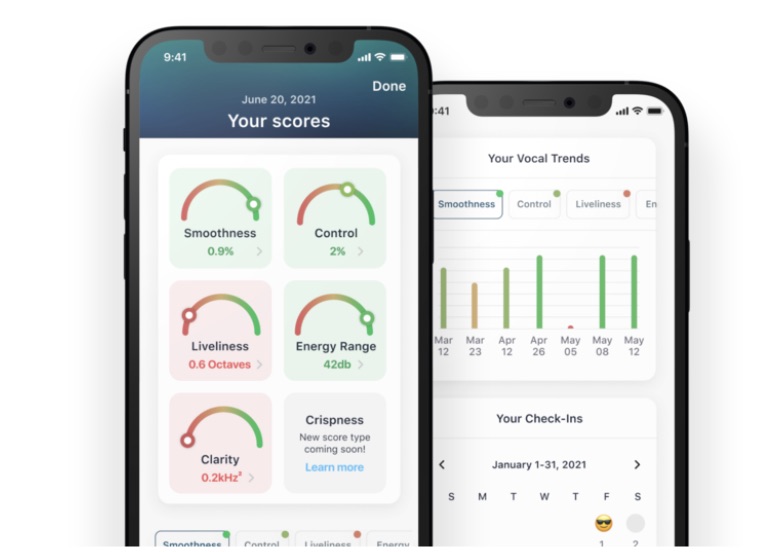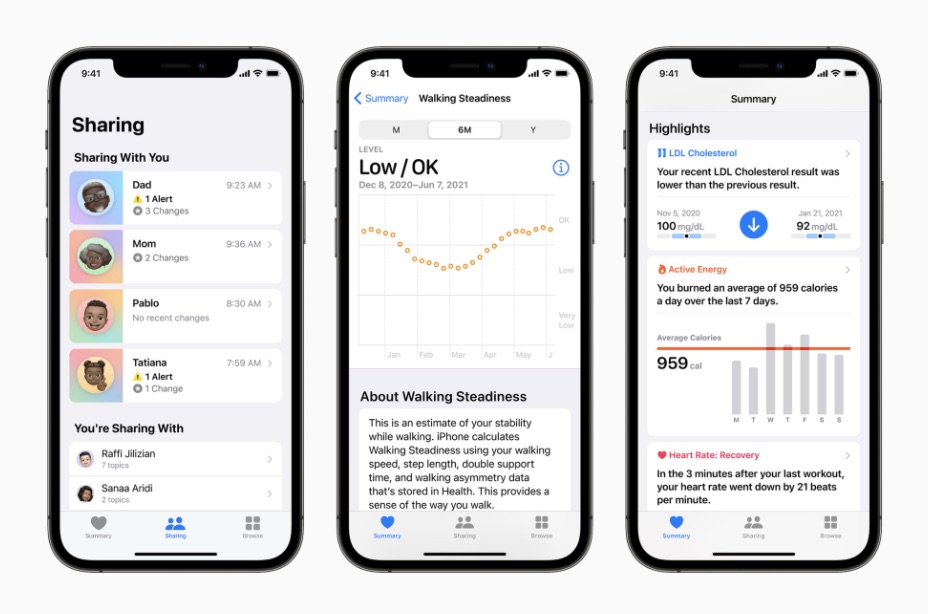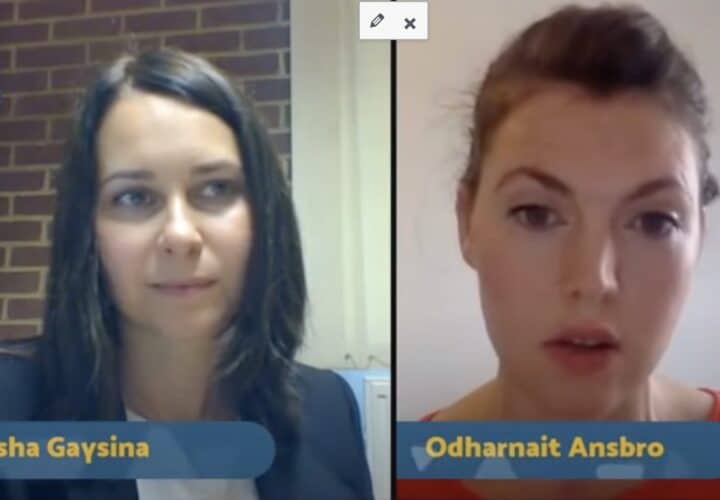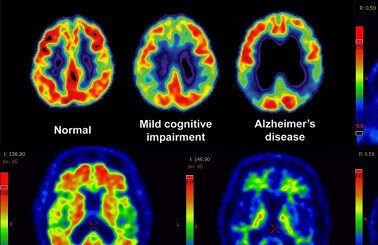New wearable tech is being designed to detect depression with more than twice the accuracy of your average human psychiatrist — and prompt users to make lifestyle changes that boost their mental health.
The need for mental healthcare is on the rise during the pandemic, yet its financial cost and accessibility are barriers for many. Could tech help fill the gap?
The U.S. Centers for Disease Control and Prevention (CDC) found this year that more than 40 percent of Americans are experiencing symptoms of an anxiety or depressive disorder. This equates to about 136 million individuals with a condition. On the other hand, there are only about 55,000 practicing psychiatrists, or one doctor for every 3,000 patients. If that doesn’t sound too bad, just imagine lining up outside the doctor’s office and finding 2,999 people in front of you.
Compact, portable, affordable, and accurate wearable devices and smart devices, such as the Apple Watch and the Philips Wearable biosensor, are emerging as ways to screen, monitor, and even formulate personalized treatments for depression.
Want to learn more about clinical trials
for Alzheimer’s and dementia?
Check out the Lilly Trial Guide.
Such devices detect vital signs such as your voice, neural activity, heart rate, and the way you move, which offer surprisingly important clues to your mental health.
Both Apple Watch and Fitbit, for instance, accurately measure heart rate variability during stress, while the Empatica wristband detects stress using skin conductance, meaning changes in skin sweat gland activity.
The makers of these devices hope that by making physiological information more readily available, patients might seek help earlier or act to reduce symptoms or triggers.
Your Voice Can Tell You’re Depressed Before You Know It Yourself
Small changes in your voice can indicate changes in your health condition. By this measure, it is possible to identify specific vocal features that map to particular disease symptoms.
By measuring changes in pitch, energy, rhythm, tonal quality, voice analysis artificial intelligence can provide information about your concentration levels, optimism, and other mental health conditions.
Kintsugi, a personalized healthcare startup, claims that their voice-based diagnostic tool has 82 percent clinical accuracy in detecting depression — almost double the identification rate of general practitioners.
Sonde Health, another MedTech startup, also uses voice analysis and big data to detect symptoms of depression. In an interview with Forbes, the company’s CEO David Liu said that just a few seconds of voice recording can be broken down into a signal with thousands of unique characteristics.

For now, Sonde Health’s voice analysis platform can only be accessed by official health organizations, but their upcoming mental fitness app will be available for anyone to download.
Putting Smart Devices to Work for Your Mental Health
Depression not only affects the way we speak, it also inhibits areas of our brains, and limits physical movement. Therefore, companies are also applying big data techniques to brain activity and movement data. Electroencephalograms (EGG), which measure brain activity, and accelerometers, used to record movement, are some of the most useful physiological tools clinicians have for detecting depression.
The prefrontal cortex is a center of thinking and behavior regulation in the brain. In depression, parts of the prefrontal cortex display signs of weakness, making it hard to inhibit negative emotions and dampening people’s motivation to achieve goals.
Researchers at the University of Tasmania used a headband-like EEG device known as the Mindo-4S Jellyfish to accurately detect abnormally low prefrontal cortical activity in people with depression. Different from traditional large, bulky EEGs, the Mindo-4S is light, less restrictive, and uses dry electrodes to detect brain waves, allowing for everyday tracking and even while asleep.
There are now miniature, portable, and wireless EEGs available on the market, where data can be wirelessly transferred to your smart device. Low-cost, relatively affordable wireless EEGs are currently priced at around $99 – $1000.
Although the EEG data still has to be interpreted by a licensed medical professional and does not give a definite diagnosis, the ease of wearing these devices and monitoring depressive symptoms can be done daily.
For accelerometers, a 2020 study demonstrated that physical activity level in people with depression is typically lower. Tracked using Galaxy S3 smartwatch sensors and an Android smartphone, the detection framework had an accuracy of 96 percent in detecting people with depression.
Experts say that increasing physical activity and decreasing sedentary behavior is an actionable lifestyle change that reduces the risk of depressive symptoms. Users of this tech can set automatic reminders on their smartphones to exercise and occasionally move around after sitting for long periods of time, helping to fend off depression.
Is it caffeine or work stress that’s making me depressed?
Tech doesn’t stop at just identifying depression and prompting lifestyle changes to fight it. Some tech is being designed to actually predict mood disorders. In a June 2021 study, researchers at the University of California San Diego (UCSD) School of Medicine were able to generate individualized predictions of depression by using machine learning to analyse participants’ lifestyles and habits.
Jyoti Mishra, the senior author of the study and an assistant professor at UCSD, explained that depression can be caused by multiple different underlying reasons and factors. Yet, current diagnosis methods mostly consist of “asking people how they feel and then writing a prescription for medication,” which explains why “first-line treatments have shown to be only mild to moderately effective in large trials.”
One individual’s emotional triggers may be very different from the next. For instance, in the study, exercise and daily caffeine intake emerged as strong impacts on mood for one participant, but it was sleep and stress that were most relevant for another.
According to Mishra, if the new machine-learning model can effectively identify the predictors of each person’s depressed mood, both individuals and healthcare professionals can harness the information to form a “personalized treatment plan, whether that be therapy with a mental health professional, more exercise or a combination of approaches.”
Keep Your Family Members in the Loop
Although many advanced MedTech tools are still years away, simpler (and no less useful) implementations are already available.
By late 2021, Apple’s Health App will have a new sharing tool, which lets users privately share their health and wellness data with family members, caregivers and healthcare professionals.
According to the official news release, “users have full control over which data they share and with whom,” while for the person receiving the information, the data is presented with important insights and trends highlighted.
Users can range from grandparents sharing blood pressure data with their family members, to people with depression updating mood, movement, and diet insights with their psychologist.

Communication has always been a complex problem between physicians and patients. Efficient communication with physicians about everyday activities and health changes is vital to delivering quality patient care, but an individual’s subjective self-reports or a physician’s clinical impressions are not always reliable.
Now, with timely updates of certain types of health data, doctors can build a clear and accurate picture of their patient’s health status and use it to augment their diagnosis or treatment plan.
Smartwatches and fitness trackers that once were simply used for fitness tracking have now become an essential tool in healthcare management. With voice analysis, EEG, and accelerometers able to screen for depression, users are better equipped with the knowledge needed to take further action. With new machine learning models, individuals can be matched with tailored, personalized treatment plans that maximize benefits and minimize side effects. With Apple’s Health Sharing feature, physicians and patients alike will benefit from more meaningful, effective conversations.



